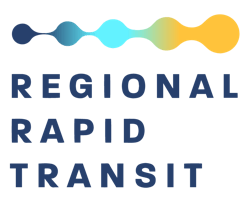TBARTA’s proposed BRT named Regional Rapid Transit
The Tampa Bay Area Regional Transit Authority (TBARTA) has named its proposed 41-mile bus rapid transit (BRT) project the Regional Rapid Transit.
The project along I-275 will connect Hillsborough, Pasco and Pinellas counties.
“This will be high-quality transit that embodies many of the same benefits as light rail,” said TBARTA Executive Director David Green. “As we continue our work to engage and inform Tampa Bay on the benefits BRT will offer, it’s important the project has a name reflecting those qualities. Regional Rapid Transit accurately and succinctly describes what riders will experience.”
TBARTA’s proposed route would begin in downtown St. Petersburg and travel north on I-275 through downtown Tampa before ending in Wesley Chapel. The project is currently undergoing a Project Development and Environment (PD&E) study, made possible through a grant from the Florida Department of Transportation (FDOT).
“This project represents a phenomenal opportunity for Tampa Bay,” said Jack Gonsalves, WSP USA’s national BRT design expert and part of TBARTA’s consultant team. “We have an opportunity to push the envelope of BRT design and technology while reimagining how our interstates can better serve all, connecting the region in ways that are not available today.”
As the Regional Rapid Transit project progresses, the website will be updated with new information. This phase of the PD&E study examines the length and location of dedicated transit lanes; the number, types and locations of stations; the potential for economic growth; and the ability to seamlessly connect the BRT to current and planned local transit services provided by the Hillsborough Area Regional Transit Authority, Pasco County Public Transportation and the Pinellas Suncoast Transit Authority.
“Tampa Bay is increasingly a regional community with a need for better connectivity that benefits residents, workers and visitors,” Green said. “Not only will this project provide a more extensive and efficient means to get people where they want to go, it will also serve as a catalyst for future regional transit projects.”
